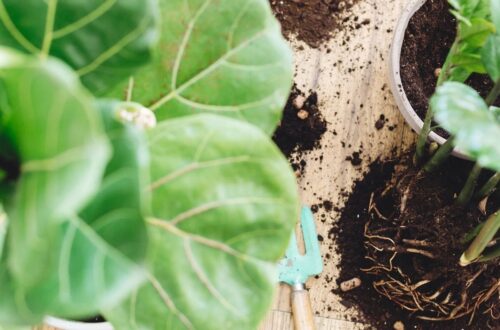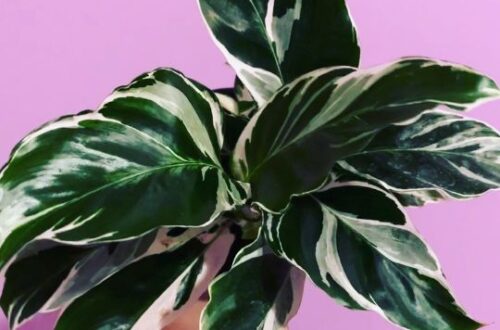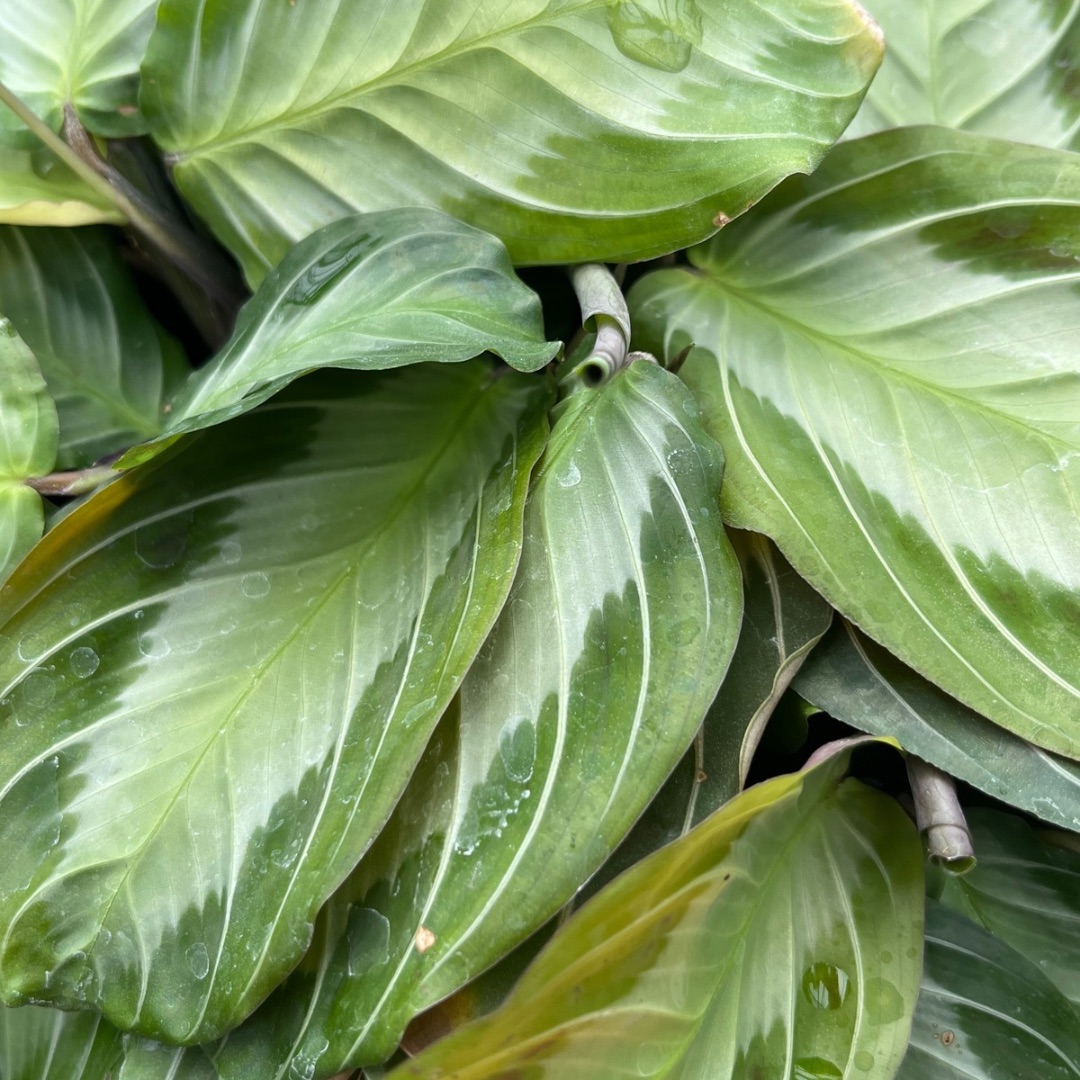
Easiest Maranta to Grow
Some of the prettiest houseplants out there include the Maranta plants. Also known as prayer plants, these uniquely patterned beauties are relatively easy to care for and much more forgiving than other plants with similar ornate foliage. If you are considering bringing one of these houseplants home, you might be scratching your head, wondering which maranta is the easiest way to dip your toe in the water. They are all beautiful, but which is the easiest maranta to grow?
About Maranta Houseplants
Maranta is a genus belonging to the Marantaceae family. While there are around 50 species recognized in this genus, the Maranta Leuconeura is the species most commonly kept as a houseplant. Fortunately, there are several variations of the Maranta Leuconeura, and new cultivars are constantly discovered or facilitated, which is great news for collectors. While the Maranta is a close relative of the Calathea, most varieties are much hardier and easier to care for.
What makes Maranta houseplants particularly special is their ability to fold and move their leaves in the evening, a phenomenon known as nyctinasty. This movement resembles the hand motion of praying, which is how the Maranta earned its nickname, Prayer Plant.
What Makes a Plant ‘Easy’ to Grow?
Ultimately, what makes a plant easy to grow is subjective and depends on your commitment, care, and habits. Someone who tends to overwater may find a succulent impossible to grow, whereas they may find moisture-loving plants easier. It also depends on your home’s environment and whether you need to change it for plants to thrive. For this article, we’re looking at the markers of what people traditionally consider ‘easy’:
- Tolerance of lower light conditions
- Its ability to bounce back after a late watering or mild neglect
- Whether it is pest resistant or prone to getting pests like spider mites or thrips
- Humidity demands and whether or not it can tolerate typical household humidity
Which Maranta is Easiest to Grow?
So, if you are interested in bringing home a Maranta but are not sure which one is best for beginners or which is easier to grow, this list is for you! It is a complete list of common Maranta houseplants, arranged from easiest to most difficult to grow.

Easiest: Maranta Leuconeura’ Lemon Lime’
The red Maranta and the Lemon Lime could be tied in this category. Still, when it comes down to personal experience, I have found the lemon-lime to be slightly easier than the red, although they are both very easy plants to grow as long as you give them the right conditions. What gives the beautiful lemon lime the edge is that I’ve found that its growth rate tends to be faster than that of the maranta red. This plant is likely to grow faster due to the abundance of greens, which helps with photosynthesis. While they prefer moist soil, they typically will bounce back if you are a day or two late watering your plant.
View this post on Instagram
Second Easiest: Maranta Leuconeura ‘Red’
As I said above, the red could be tied with the Lemon Lime since they are very much matched in their ease of care. It ultimately comes down to your personal preference: you may prefer the vibrant contrast of the red-veined leaves or keep your houseplants every shade of green. Either way, the Maranta Leuconeura ‘Red’ is one of the easiest Marantas to grow! With the proper care, this plant will flourish even in lower light conditions and is much more likely to forgive a late watering than the others on this list.
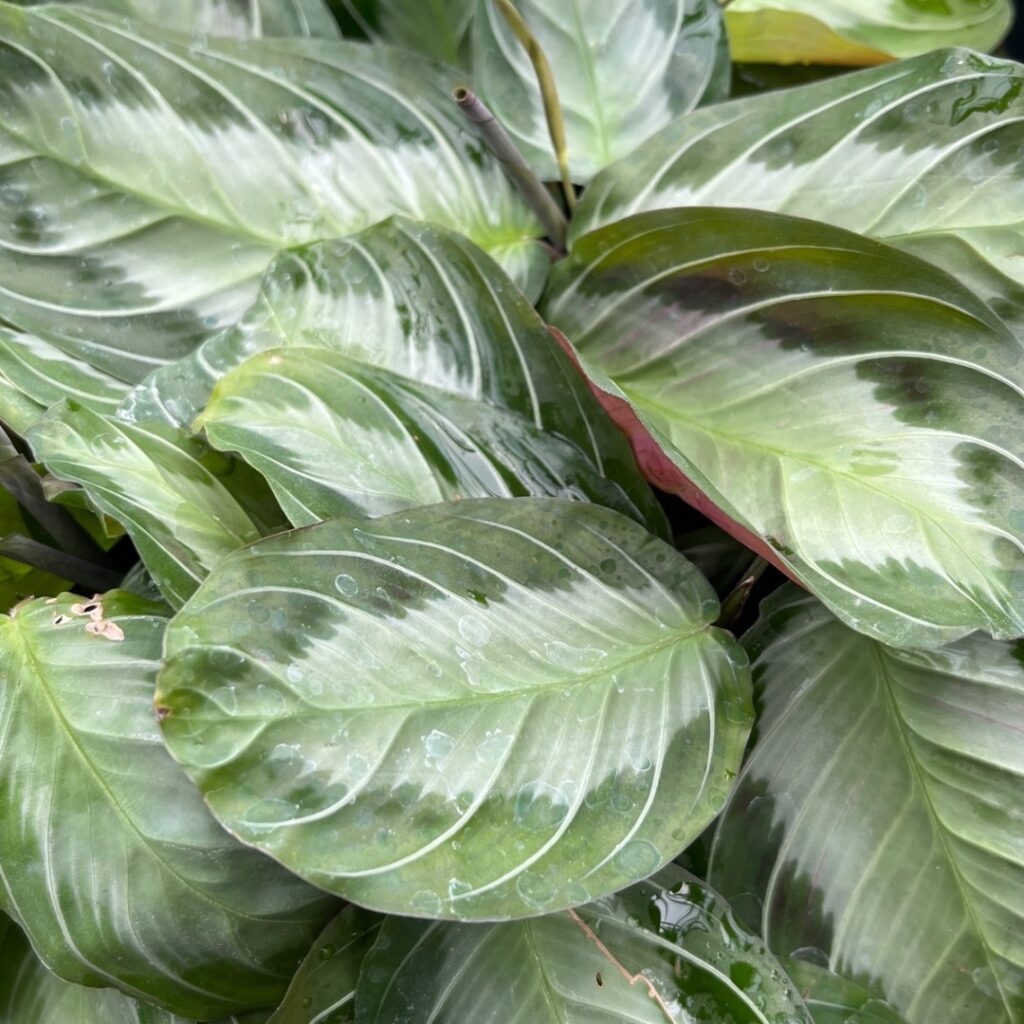
Middle: Maranta Silver Band
The Maranta Leuconeura “Silver Band” is arguably one of the most beautiful varieties if you’re willing to put some extra effort into its care. What makes this particular maranta less easy than the previous two is its thinner, slightly more delicate leaves. As a result, it retains even less water, needs a bit more humidity, and will less likely tolerate a missed or late watering.
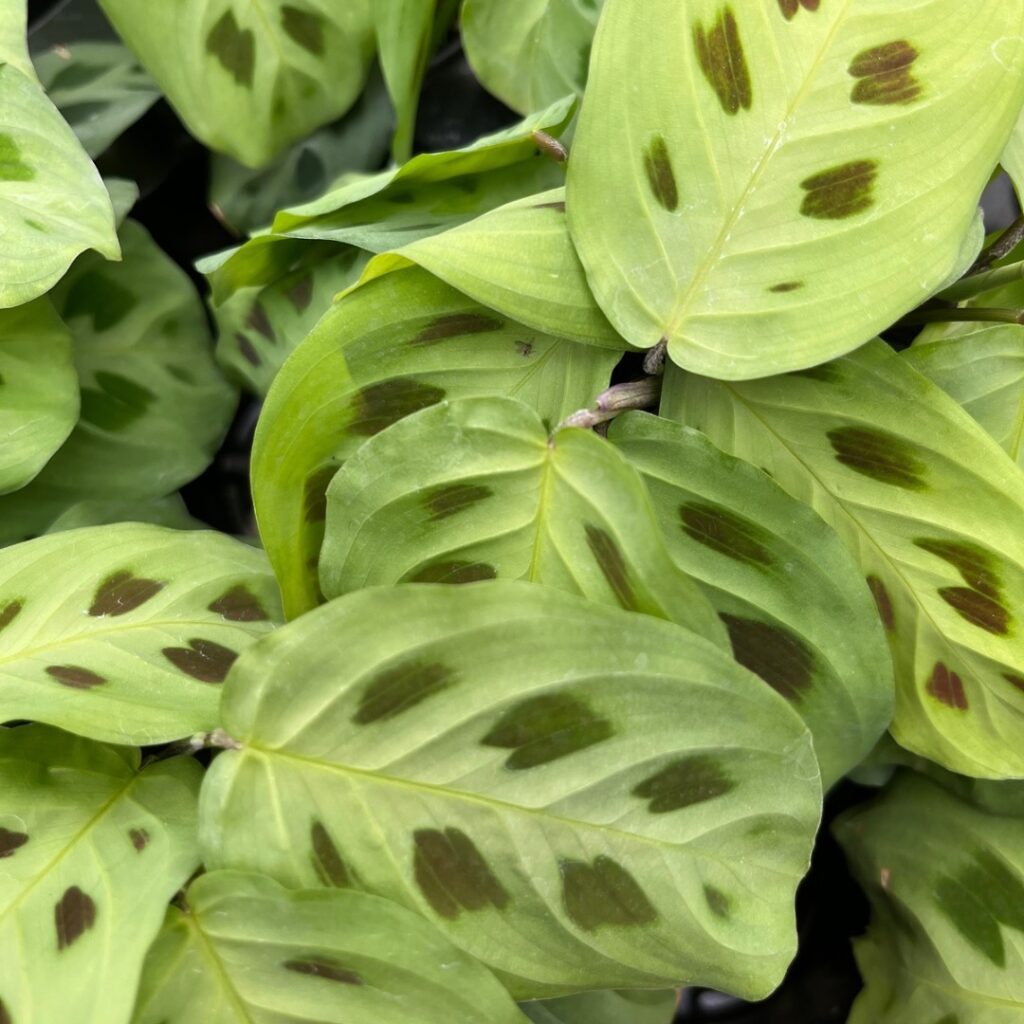
Harder: Maranta Leuconeura Kerchoveana “Rabbit Tracks”
The Maranta “Rabbit Tracks” is an understated, delicate green Maranta variety that is even less easy to grow than the Maranta silver band. However, if you love their beautiful foliage, they are a gorgeous plant to showcase in your home. These plants are significantly more delicate than the red-veined or lemon-lime. This makes them require higher humidity levels and extra caution not to let their soil fully dry out. It also makes them slightly more vulnerable to pests, particularly if they undergo any form of stress.
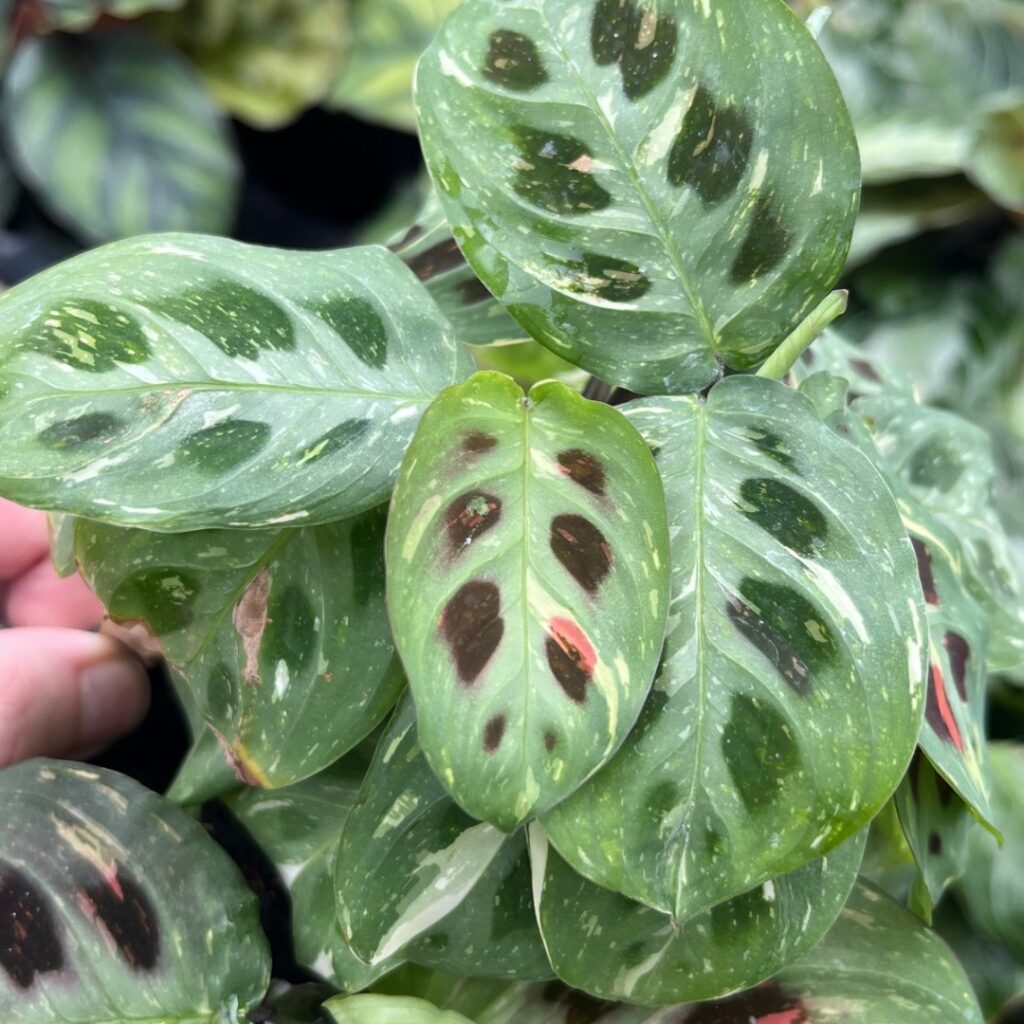
Hardest: Maranta Leuconeura Kerchoveana “Rabbit Tracks” Variegata
This Maranta variety is, in my experience, the most difficult one on the list to grow, but don’t let that deter you! In addition to having fragile and delicate leaves, the variegated Maranta Leuconeura also has variegation, which means you need to pay attention to the amount of light you give it. In addition, you will want to give this plant higher humidity levels, ideally around 60%, if you want it to thrive.
When a plant is variegated, the plant has less chlorophyll in the leaves, which produces that green color. This means that the plant needs more light for photosynthesis. However, since the leaves are very delicate, they are susceptible to sunburn. You will want to strike a delicate balance between giving it enough gentle indirect light to compensate for the reduced chlorophyll in the leaves but not too much. It certainly can be done! You may just need to give this maranta a little extra effort. I’d recommend giving this plant a grow light and a humidifier to see it thrive and check on it regularly to prevent missed watering.
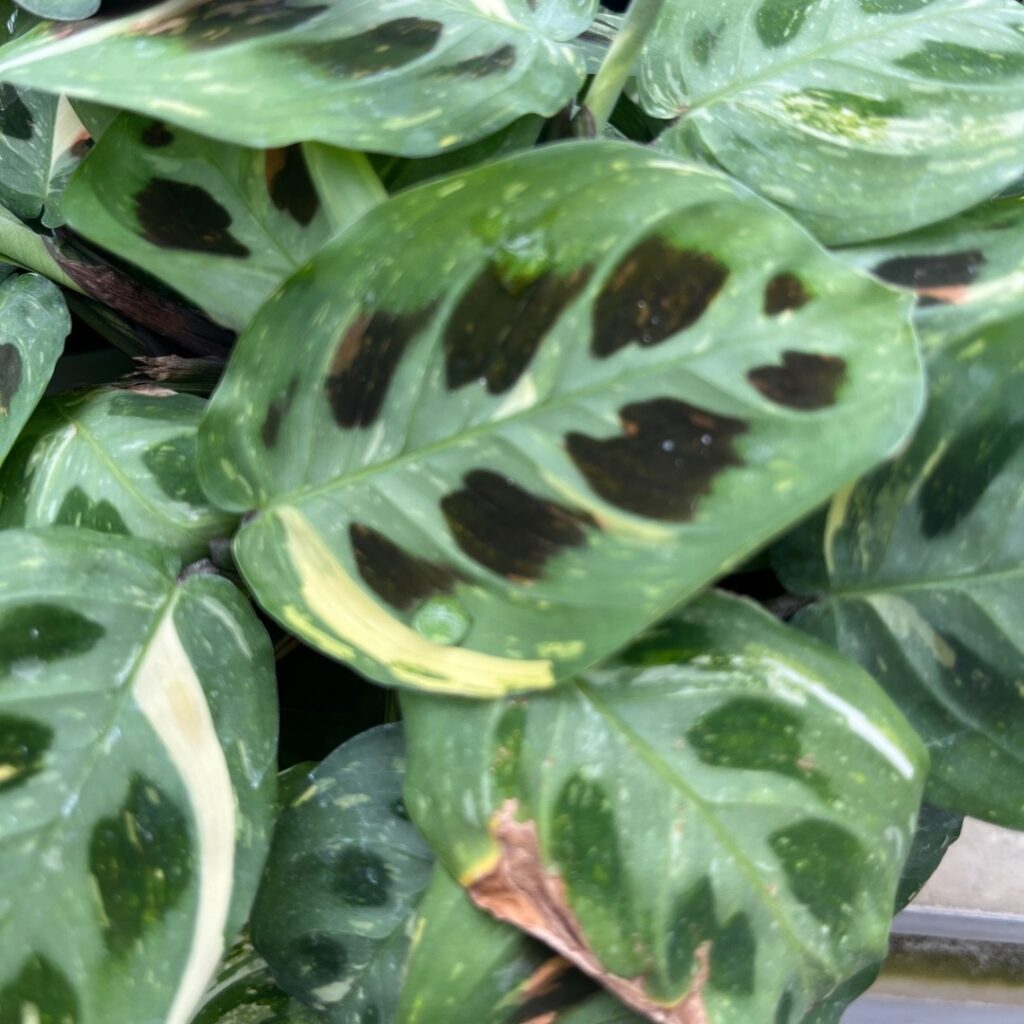
Maranta Houseplant Care
Maranta plants thrive under similar care as Calathea houseplants, but they tend to be much more forgiving. While they are very tolerant houseplants overall, if you want your Marantas to thrive in your home, your best bet is replicating their natural environment. Maranta plants grow along the jungle forest floor in Brazil. They receive dappled sunlight from the plants overhead and abundant humidity and moisture.
Marantas and Sunlight
Maranta houseplants prefer medium light conditions but may tolerate lower light. According to The Houseplant Journal’s Light Requirement guide, this translates to roughly 200 foot candles, but they can tolerate closer to 100 foot candles. Too much light or direct light can result in the leaves losing their colorful patterns. However, I’ve found that this doesn’t happen with my LED grow lights, and my Lemon Lime Maranta thrives with the artificial grow lights. If you do, make sure that you stay on top of watering.
Watering
I find watering my Maranta once per week sufficient to keep the soil moist. However, how often you water your Maranta will depend on other factors such as light, soil, pot, and humidity. Generally, a moisture meter is always a great idea to ensure the soil is moist but not soaking wet.
Marantas and Humidity
Lastly, if you really want your Maranta to thrive, the secret ingredient is giving it higher humidity levels. The Leuconeura Red and the Lemon Lime are much more tolerant of average household humidity, so you have a bit more flexibility with these houseplants. However, humidity levels above 50%, but ideally 60%, are necessary for the Maranta varieties with thinner leaves, especially the variegated Leuconeura.
Pest Prevention
Having a solid pest prevention routine is essential to growing beautiful Maranta houseplants. This is especially true for the thinner leaf varieties, but even the easier varieties are not immune to pest issues. Mealybugs are a common issue for Marantas, but I have also experienced spider mites and thrips in just about every species mentioned here. Even spraying down your Marantas in the shower once monthly and treating them for pests once per season can go a long way in preventing pest issues.
Pet Safety
While the ASPCA lists Prayer Plants as non-toxic to dogs and cats, I would advise against letting your pet munch on your plant’s leaves, as this can lead to other dangers such as choking, digestive upset, and even stomach impaction. If you want to learn more about this, check out my deep dive on Marantas and cats here, along with tips for keeping your houseplants and pets together safely.

